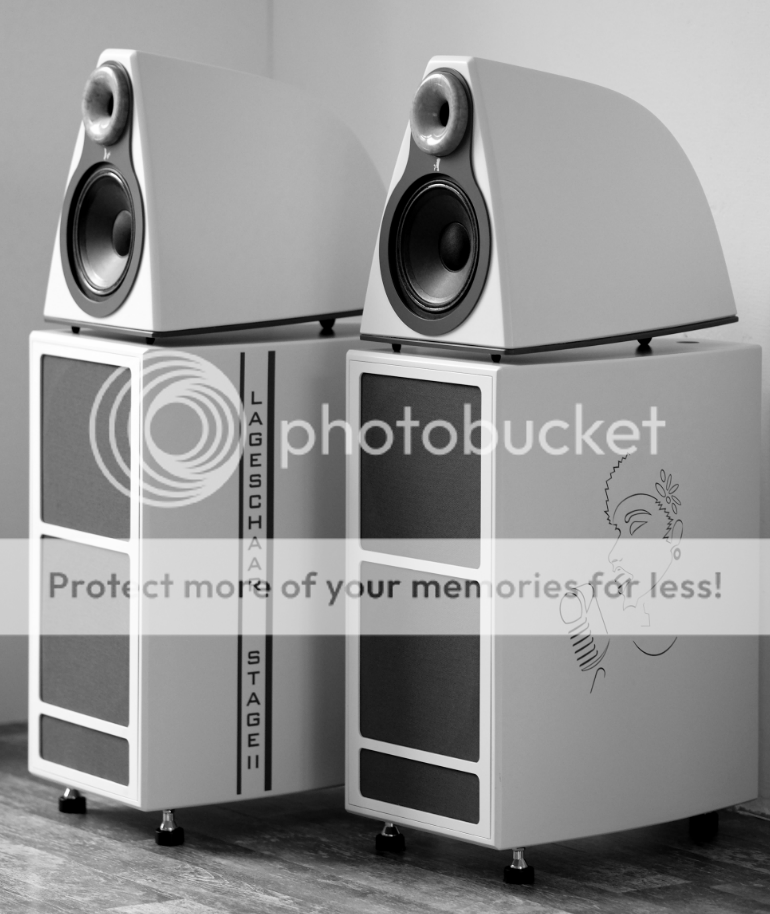The Unbearable Lightness of Being -.)
No, no.
It's:
The Unbearable "Lightness" of Beaming. 😀
Btw,
(..I'm thinking most of the last few pages should be moved to its own thread.)
The OB Mk1 (original thread topic) looks very nice! 🙂
(..I'm thinking most of the last few pages should be moved to its own thread.)
The OB Mk1 (original thread topic) looks very nice! 🙂
🙂 Sure ScottG; beam me up!
And you are right, my project should move on to a separate tread. And Helmuts beautiful OB Mk1 deserves to stay on its own in this tread.
And you are right, my project should move on to a separate tread. And Helmuts beautiful OB Mk1 deserves to stay on its own in this tread.
Btw,
(..I'm thinking most of the last few pages should be moved to its own thread.)
The OB Mk1 (original thread topic) looks very nice! 🙂
I am tuning the loudspeaker wiring amazing differences in sound using 4mm^2 copper, or 2,5mm^2 silver-plated copper. Or tinned copper-wire. And carbon wire.
It makes the bas round and progressive, or disappear in the total with a other combination. Other behaviour of bas works through in the sound perceived from the horn.
Now I found a nice combination for my system and drivers because I Bi-wire my system it really is a advantage to do speaker-cable tuning on the right spot.
So what I am saying it sounds now even better than it did already, with the hybrid bi-wire cable I was using containing a copper-wire silver-plated copper woven combination.
I can control the level of the horn to the bas when it do this the position of the singer is perceived as being further away or more in front when turning it.
And at the same time the sound-stage moves a bit up when the level of the horn is turned down. There is a ideal point to my idea depending on the mix of the the song they are different to.
This are when measured very little differences but make a big deal for listener. I would advise every one makes the mid-high-level controllable it comes very precise and also biwire it to the subbas.
Last edited:
I am tuning the loudspeaker wiring amazing differences in sound using 4mm^2 copper, or 2,5mm^2 silver-plated copper. Or tinned copper-wire. And carbon wire.
It makes the bas round and progressive, or disappear in the total with a other combination. Other behaviour of bas works through in the sound perceived from the horn.
Now I found a nice combination for my system and drivers because I Bi-wire my system it really is a advantage to do speaker-cable tuning on the right spot.
So what I am saying it sounds now even better than it did already, with the hybrid bi-wire cable I was using containing a copper-wire silver-plated copper woven combination.
I can control the level of the horn to the bas when it do this the position of the singer is perceived as being further away or more in front when turning it.
And at the same time the sound-stage moves a bit up when the level of the horn is turned down. There is a ideal point to my idea depending on the mix of the the song they are different to.
This are when measured very little differences but make a big deal for listener. I would advise every one makes the mid-high-level controllable it comes very precise and also biwire it to the subbas.
-this also follows some of my experiences.
General items:
1. Increased resistance generally creates a "warmer" "rounded" sound, but with some loss in clarity. (..sometimes a great loss in clarity.)
2. The greater the moving mass and/or force generated by a woofer or grouping of woofers, the greater the effect on wire gauge differences - with increased gauge resulting in increased bass performance (i.e. "dynamics", "drive", "force", and often apparent extension as well.). (..and while resistance may change marginally in a real-word application between a smaller gauge wire vs. a larger gauge, it doesn't produce the same sort of alteration as found in #1 above.)
3. 1 & 2 seems rather dependent on the amplifier.
4. High Compression fitting usually sounds better (improved clarity, especially over multiple "joints") than soldering, though it does depend on the wire diameter. Larger diameter (and necessarily gauge) wire that isn't "flattened" at the connection point is better soldered. Unwinding a large gauge "flat ribbon" copper inductor (Goertz, Erse, Jantzen, Solo, etc.) and stacking it (to further increase gauge) with a compliant layer between wires makes an excellent woofer "wire" that is capable of compression fitting. (..at the ends though I do stop the compliant layer and make a small solder connection between the stacked wire for strength and oxidation prevention. It also needs "wrapping" along it's length to keep the bundle together.)
Last edited:
I thought the silver wire would sound thin but it was the oposite the bas became more powerfull and round.
It is what I like that is the main thing.😀
Interesting you did also experience differences it is not only the gauge and resistance it is also a material depended behavior I did experience.
It is what I like that is the main thing.😀
Interesting you did also experience differences it is not only the gauge and resistance it is also a material depended behavior I did experience.
I thought the silver wire would sound thin but it was the oposite the bas became more powerfull and round.
It is what I like that is the main thing.😀
Interesting you did also experience differences it is not only the gauge and resistance it is also a material depended behavior I did experience.
I've gotten as much difference from litz vs solid core on high purity copper as solid core copper vs. solid core silver.
On one occasion a high purity silver did improve the sound (vs. copper), but I don't think it was the electrical difference between the two metals, rather the hardness/"mechanical" difference. (..that silver was particularly soft.) I also didn't have much of it and the gauge was around 25 or so, used on a tweeter.
I think though to hear much of any metal difference for lower current (small gauge) wire for loudspeaker hook-up requires a pairing amplifier that doesn't have many components in the signal path. (..fewer components, the greater the difference - and probably true for the crossover as well.)
I did also think the litz difference sounded different very tin litz in thin wire and more thicker wire with thicker litz came out different in refinement in high frequency and spacious sound.I've gotten as much difference from litz vs solid core on high purity copper as solid core copper vs. solid core silver.
YOUTUBE SOUND SAMPLE of the open-baffle on a KT66 PSE tube-amp 2x12W. Poor thing is the microphone of the camera does not record the sub-bas so this video sounds bright in my room the sound is much warmer.
https://www.youtube.com/watch?v=AFhu4XpW-NA&feature=youtu.be
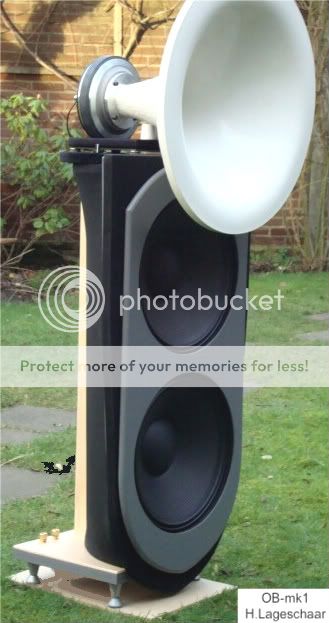
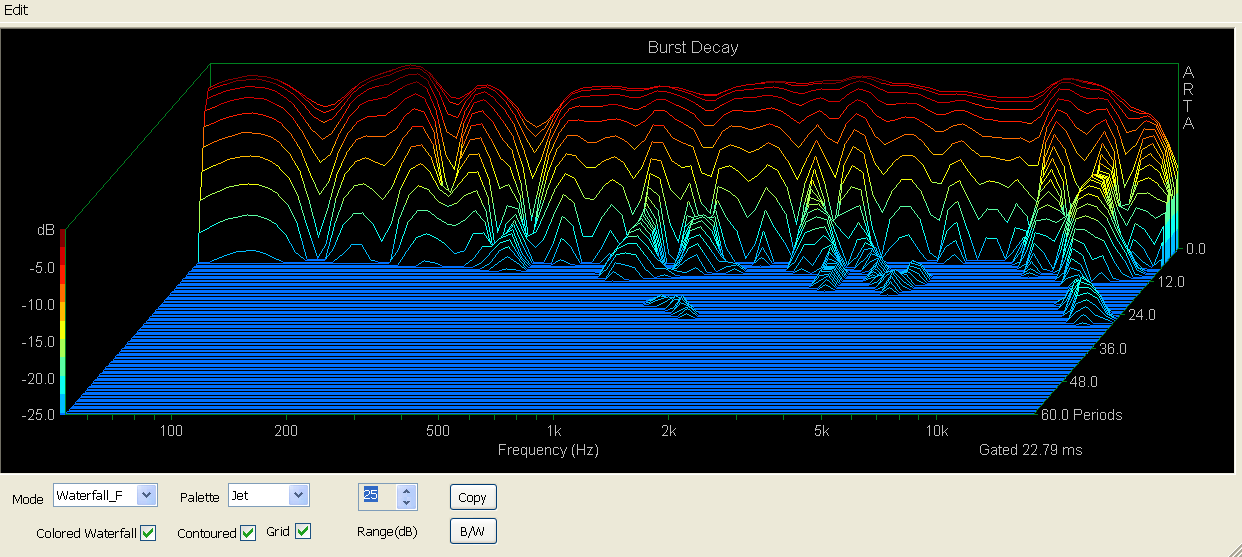
https://www.youtube.com/watch?v=AFhu4XpW-NA&feature=youtu.be


Last edited:
YOUTUBE SAMPLE using class-D amplifier compared LP to CD That handsome guy yeah really it is me, no stand in or model used. 😀
Miles Davis.
https://www.youtube.com/watch?v=91-pU2FEj10
Miles Davis.
https://www.youtube.com/watch?v=91-pU2FEj10
Last edited:
YOUTUBE SAMPLE using class-D amplifier compared LP to CD That handsome guy yeah really it is me, no stand in or model used. 😀
Miles Davis.
https://www.youtube.com/watch?v=91-pU2FEj10
Handsome devil 😀
It is a open-baffle with Kugelwellenhorn...
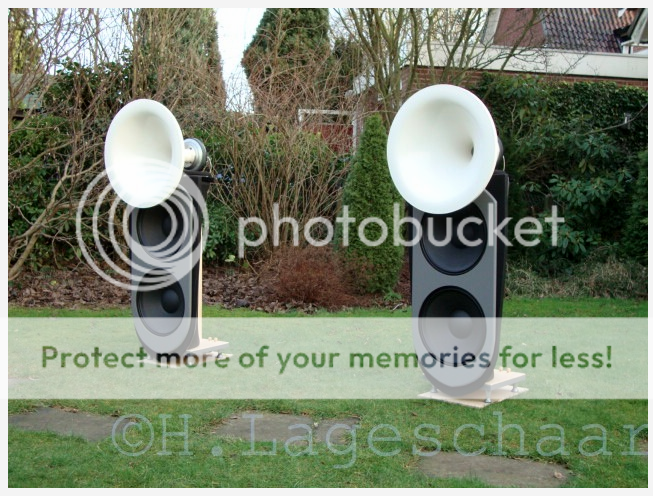
This thread is now five years old and I wonder what has become of this project?
I wonder if you have modified these great speakers or even gone onto something new. Please can you give an update on this project?
Hi Kazap,
I have bin working on loudspeakers from when I was 16 years old and turning 18 I had decided one day I will make a great sounding system I will sell commercially. Now i am 48 years old.
I also feel creative energy. Due the Dutch school structure that exclude students for a good study. When your gramma is poor or the speed of learning is slower you can't learn what your made for.
So to not be a victim of this system you need to do it all on your own in the Netherlands.
I have developed a loudspeaker system for low power amplifiers as single ended tube amplifiers.
I always wonderd what good is sound when you hear 0,2% of the input that is the efficiency of a 85 dB 1Wmtr loudspeaker.
The Lageschaar Stage II has a efficiency of 98dB 1Wmtr that is 4%. That is 20 times more sound-pressure as a 85dB speaker with the same input power.
But what is the case due physical laws the size of the speaker increase when you want to have high output bass.
So what I solved with the Lageschaar stage II is a compact standing loudspeaker that has a band with of 40Hz to 30kHz at 98dB 1Wmtr. Very low distorsion around 0,2% at 90dB 1mtr.
For natural sound I use polyester tweeter and paper cone mid and bas.
I see my product as AUDIO ART it is a composition of special material as carbon and glasfibers . the shape that is formed by acoustical laws and my taste to make a good looking sculpture.
This to reproduce tones captured in electrical energy at the highest level through this product of Dutch Audio Art. HANDMADE.
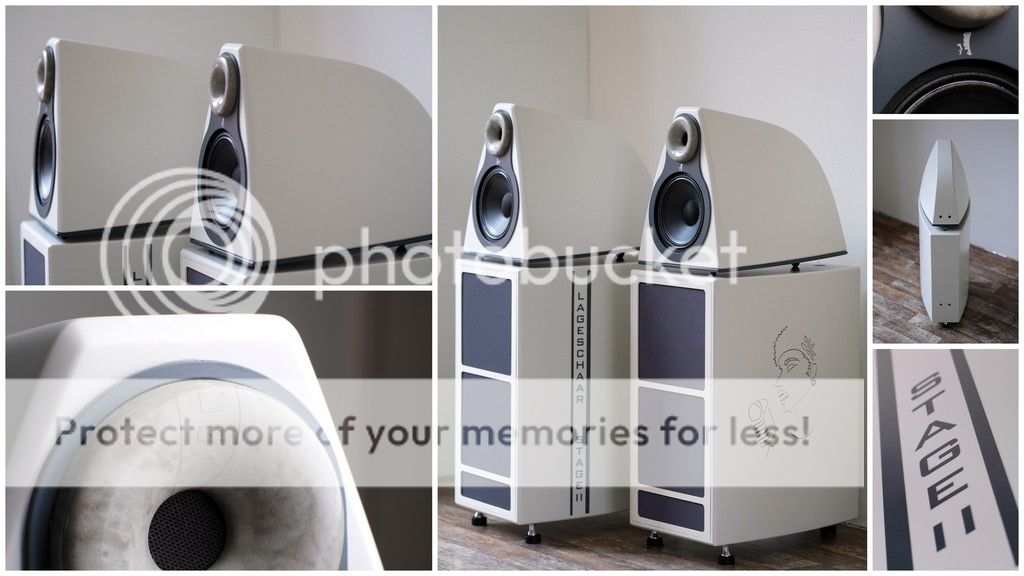
Angle topbox adjustable.
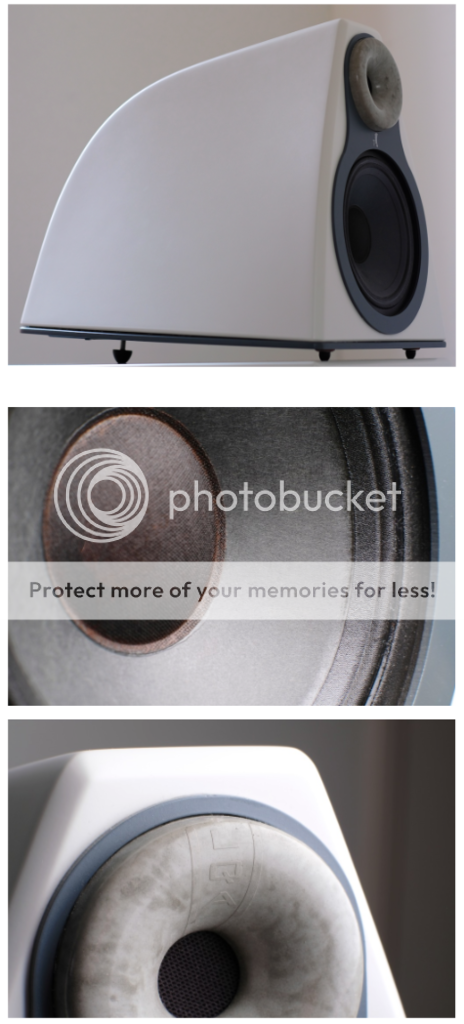
Stone LQA horn supertweeter.
Flush mount goldplated brass 60 Ampere terminals
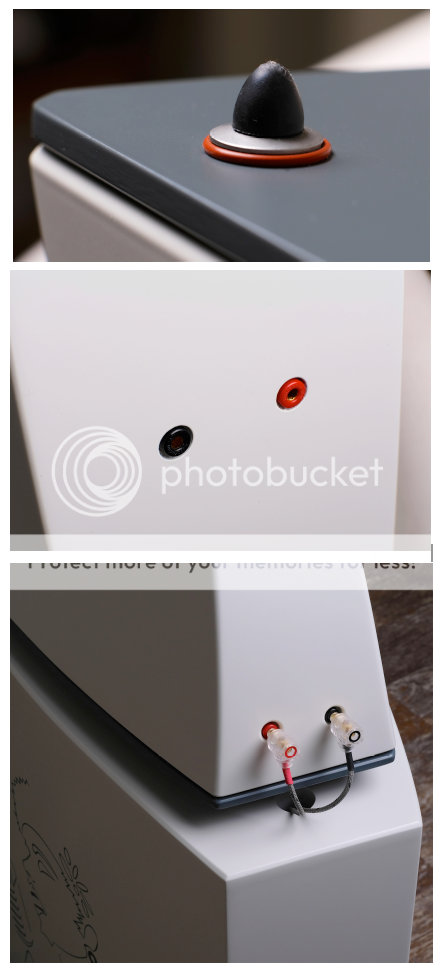
Bi-wiring hidden through internal tube.
Artwork branding is also the branding.

Male and female box
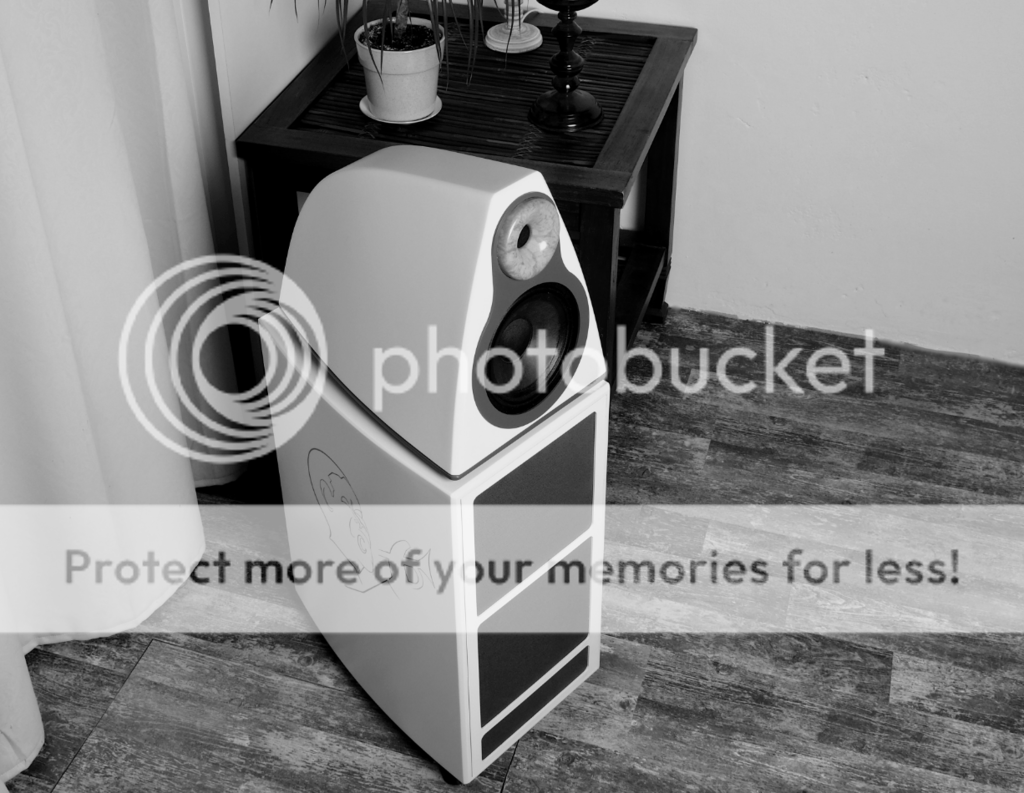
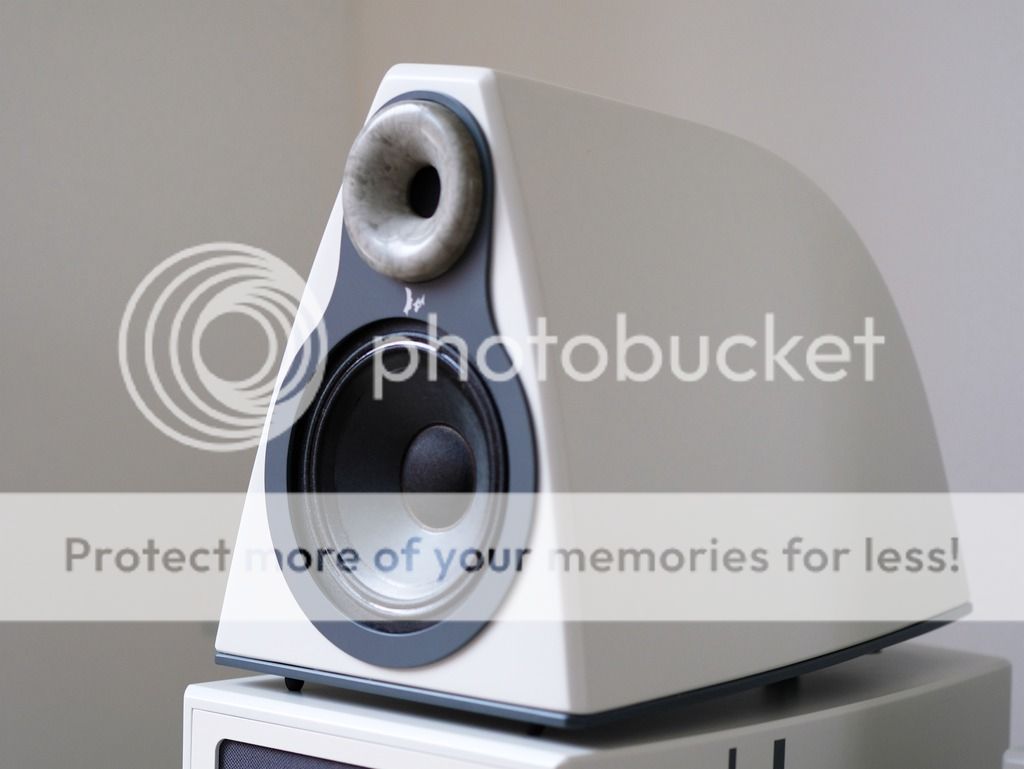
LS-cable
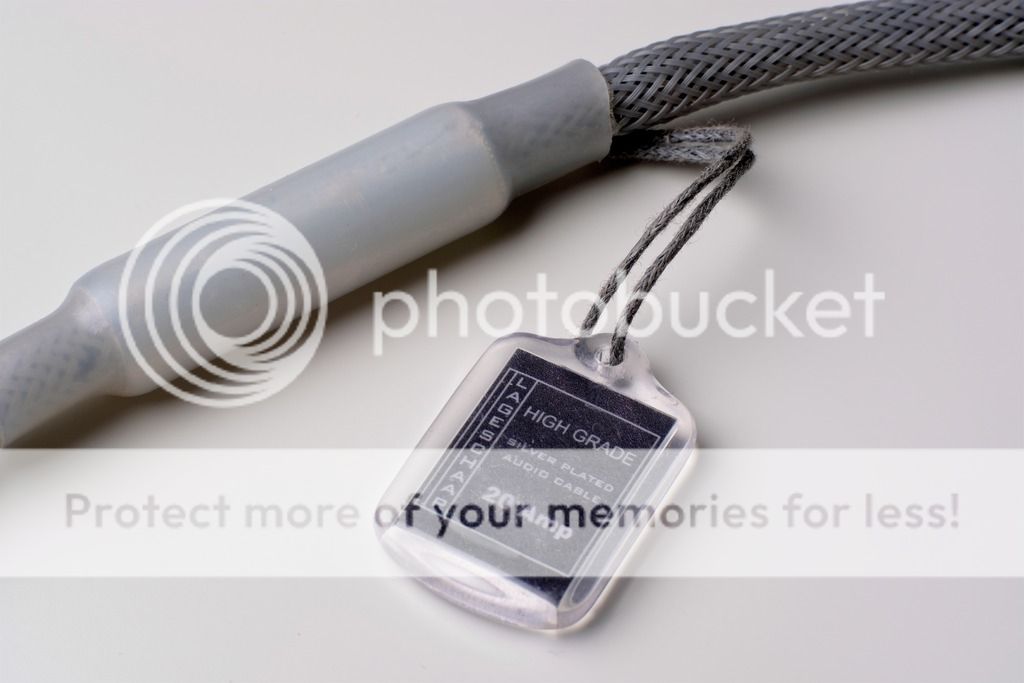
Compact size = more WAF, cat and table for reference.
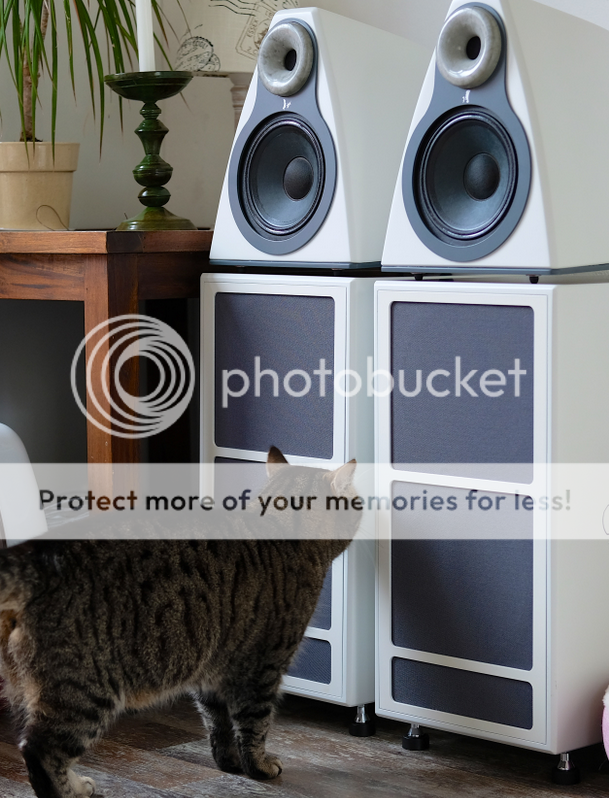
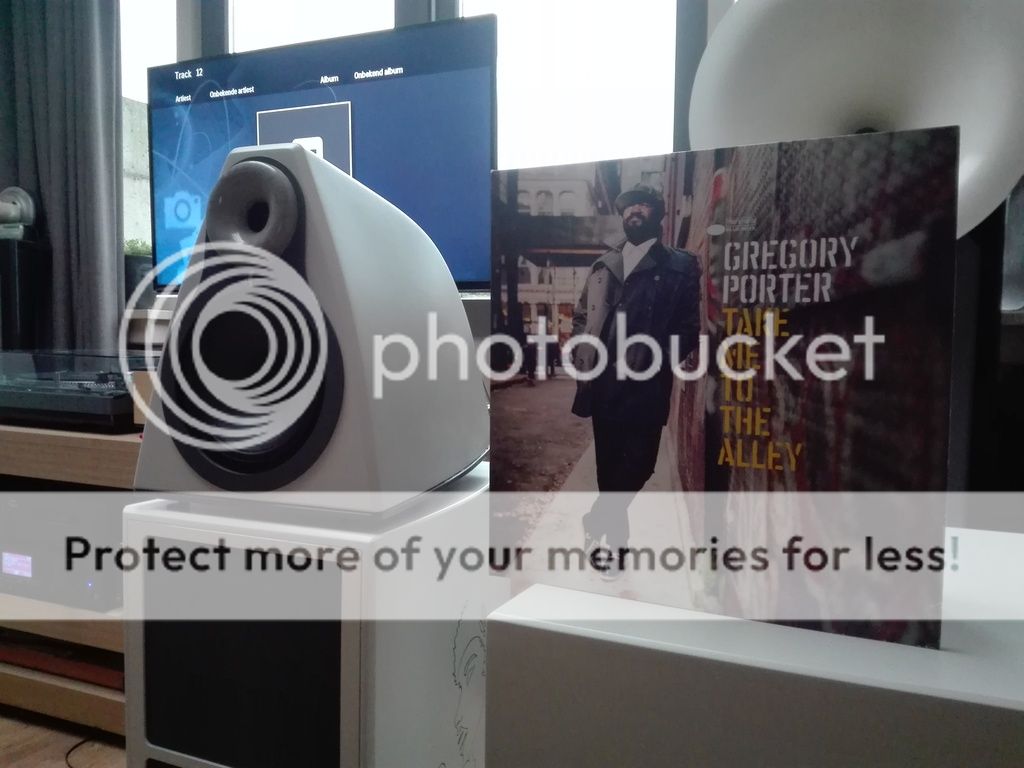
And a massive aluminium subwoofer. When the user wishes more bass extension around 30Hz
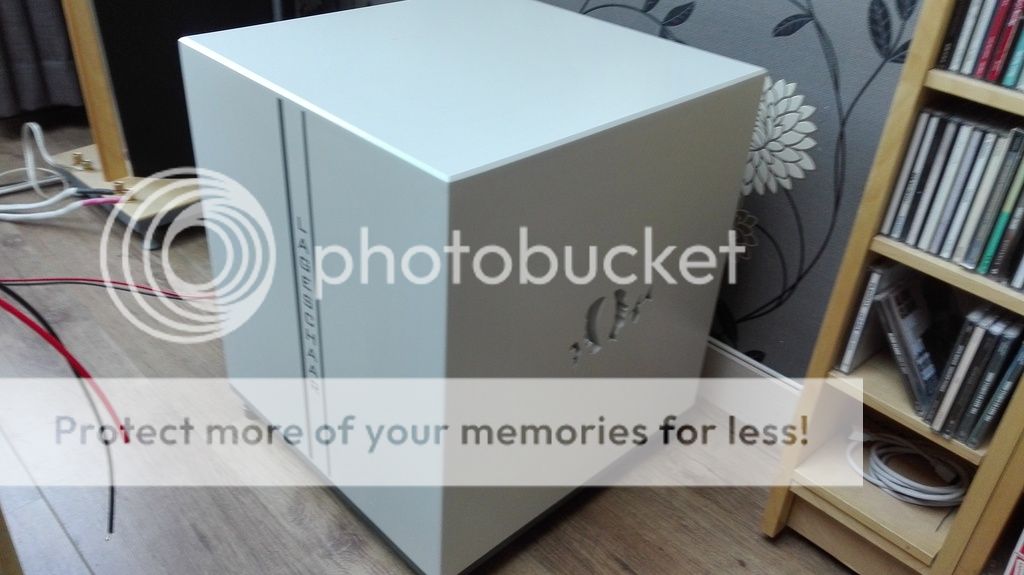
I have bin working on loudspeakers from when I was 16 years old and turning 18 I had decided one day I will make a great sounding system I will sell commercially. Now i am 48 years old.
I also feel creative energy. Due the Dutch school structure that exclude students for a good study. When your gramma is poor or the speed of learning is slower you can't learn what your made for.
So to not be a victim of this system you need to do it all on your own in the Netherlands.
I have developed a loudspeaker system for low power amplifiers as single ended tube amplifiers.
I always wonderd what good is sound when you hear 0,2% of the input that is the efficiency of a 85 dB 1Wmtr loudspeaker.
The Lageschaar Stage II has a efficiency of 98dB 1Wmtr that is 4%. That is 20 times more sound-pressure as a 85dB speaker with the same input power.
But what is the case due physical laws the size of the speaker increase when you want to have high output bass.
So what I solved with the Lageschaar stage II is a compact standing loudspeaker that has a band with of 40Hz to 30kHz at 98dB 1Wmtr. Very low distorsion around 0,2% at 90dB 1mtr.
For natural sound I use polyester tweeter and paper cone mid and bas.
I see my product as AUDIO ART it is a composition of special material as carbon and glasfibers . the shape that is formed by acoustical laws and my taste to make a good looking sculpture.
This to reproduce tones captured in electrical energy at the highest level through this product of Dutch Audio Art. HANDMADE.

Angle topbox adjustable.

Stone LQA horn supertweeter.
Flush mount goldplated brass 60 Ampere terminals

Bi-wiring hidden through internal tube.
Artwork branding is also the branding.

Male and female box


LS-cable

Compact size = more WAF, cat and table for reference.


And a massive aluminium subwoofer. When the user wishes more bass extension around 30Hz

Last edited:
Wow!! Very very nice product! Congrats!
One question regarding original thread project, what model of Faital Pro driver you used with the Kugelwelle horn? The 4-year old link it's broken.
One question regarding original thread project, what model of Faital Pro driver you used with the Kugelwelle horn? The 4-year old link it's broken.
- Status
- Not open for further replies.
- Home
- Loudspeakers
- Multi-Way
- photoshoot OB MK1, at least they sound good

